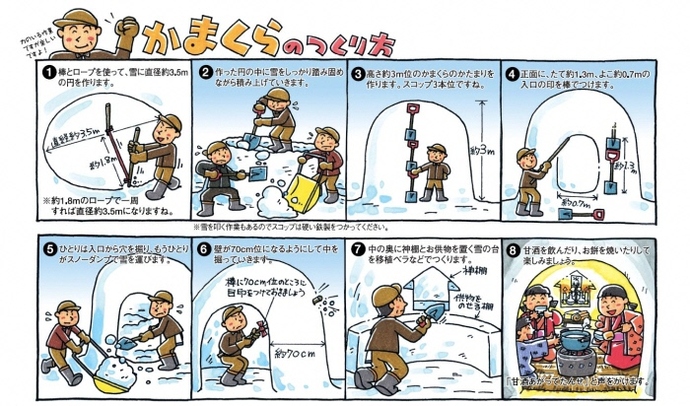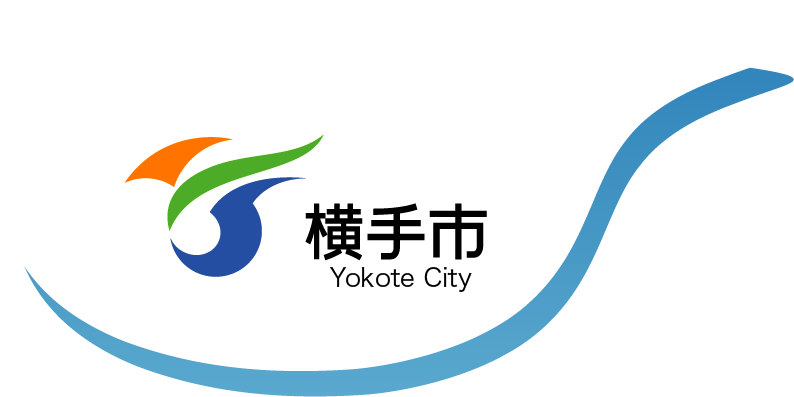Making Your Own Kamakura
Making Your Own Kamakura
The Yokote area is famous for domed snow structures called kamakura. Until the mid-
twentieth century, kamakura were made by individual families, but today, most of them
are made by specialists called “kamakura artisans” (kamakura shokunin). To become a
kamakura artisan, you must first join the Kamakura Artisan Apprenticeship program at
the Yokote Tourism Association, where you will be allowed to work with the current
artisans during the Winter Festival. Once you gain enough experience, you will be
recognized as an official kamakura artisan by the tourism association. However,
whether you are an officially recognized specialist or not, making your own snow dome
is a fun winter pastime.
Shaping the Dome
Construction of a kamakura begins with marking out the perimeter. Professional
artisans start by tying two sticks together with a rope 1.8 meters in length. One end is
stuck into the snow, and the other is used like a drafting compass to mark a circle with a
diameter of 3.6 meters. Next, snow is gradually piled into the circle and packed tightly
using the back of a shovel or one’s own feet. Once the snow pile has reached a height of
2.5 meters, more snow is piled on top and rounded to create the dome shape. With the
addition of the dome, the snow structure should stand 3 meters high. The pile is left to
harden for two to three days before work on the interior begins.
Carving Out the Interior
Once the snow has hardened, an oval 70 centimeters across and 130 centimeters high is
drawn with a stick to denote the entrance. It is important to give the kamakura a large
entrance to provide good airflow when using a brazier inside it. A shovel is then used to
hollow out the dome until the walls are 70 centimeters thick. (The thickness of the walls
can be tested by poking a stick out from the inside.) The back of a shovel is used to
smooth out the interior and the exterior of the dome.
Shaping the Altar
Traditionally, a shelf measuring about 1 meter long and 20 to 30 centimeters high is dug
out of the back interior wall to create the altar that faces the entrance. This shelf, which
is used to hold offerings, reflects the Shinto origins of kamakura. Next, an arrow-
shaped, 10-centimeter-deep alcove is dug 10 centimeters above the shelf. A rectangular
slip of paper with the characters 水神様 (oshizu-sama), meaning “water god,” are
displayed on the wall inside the alcove. Candles, fruit, sake, and other offerings are
placed on the shelf in front of the shrine. Woven mats and a small brazier may also be
brought in so that mochi (sweet rice cakes) and amazake (a fermented rice drink) can be
prepared inside the kamakura.

This English-language text was created by the Japan Tourism Agency.
このページに関するお問い合わせ
商工観光部観光おもてなし課観光企画係
〒013-8601 横手市中央町8番12号(かまくら館5階)
電話:0182-32-2118 ファクス:0182-36-0088
お問い合わせフォームは専用フォームをご利用ください。



